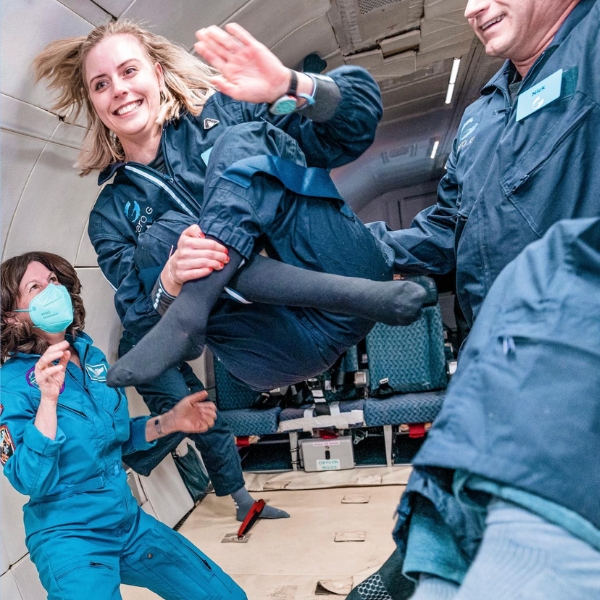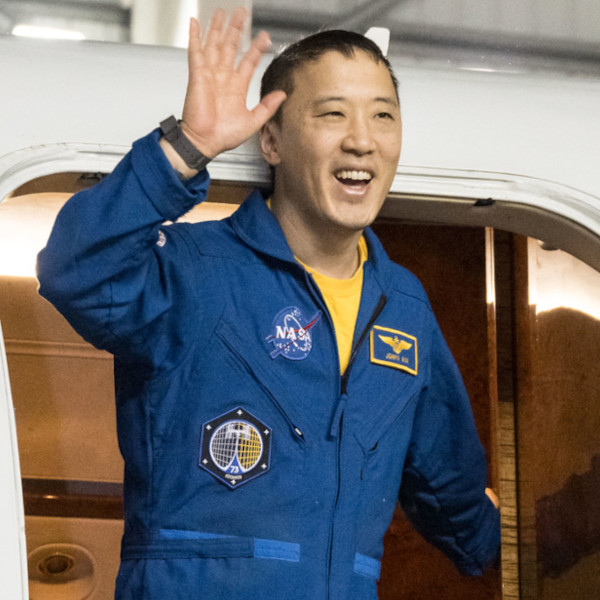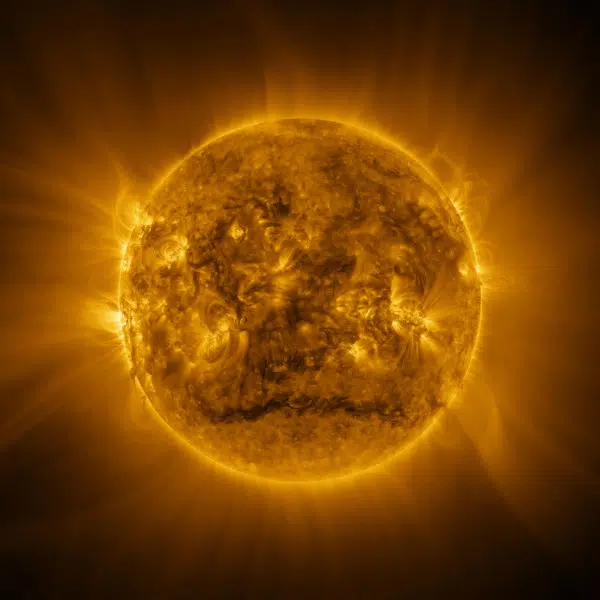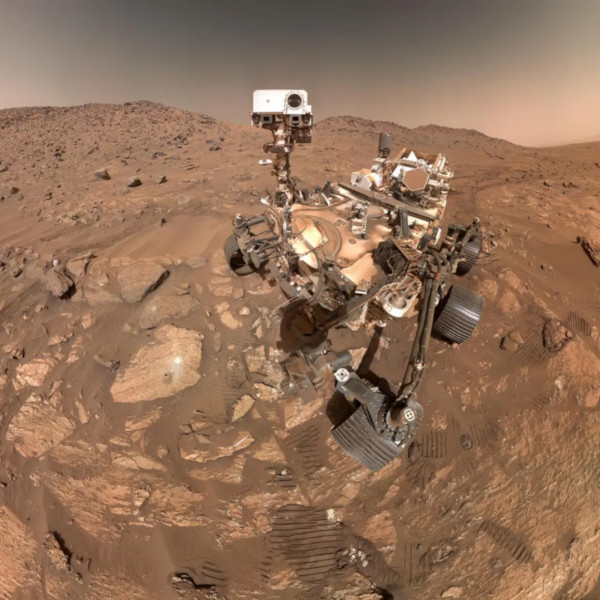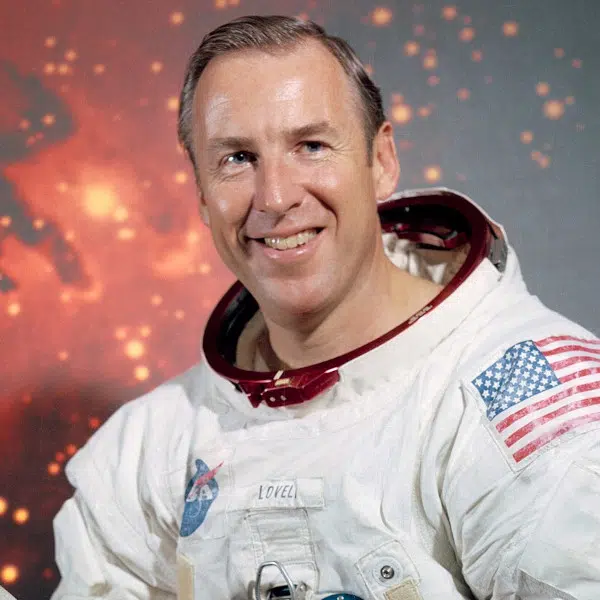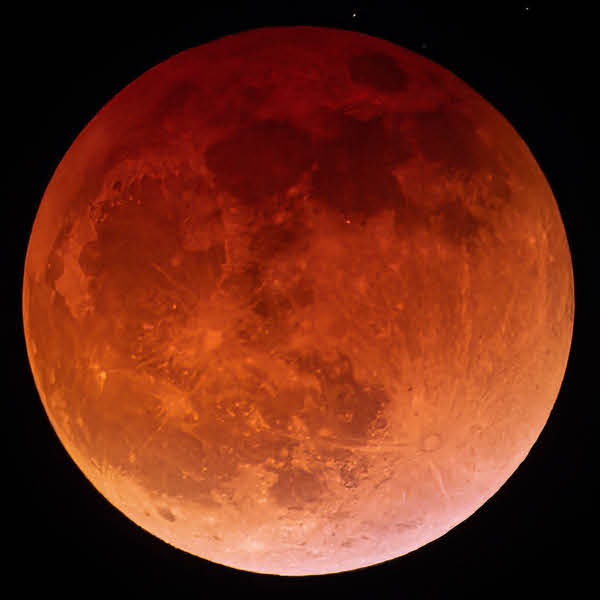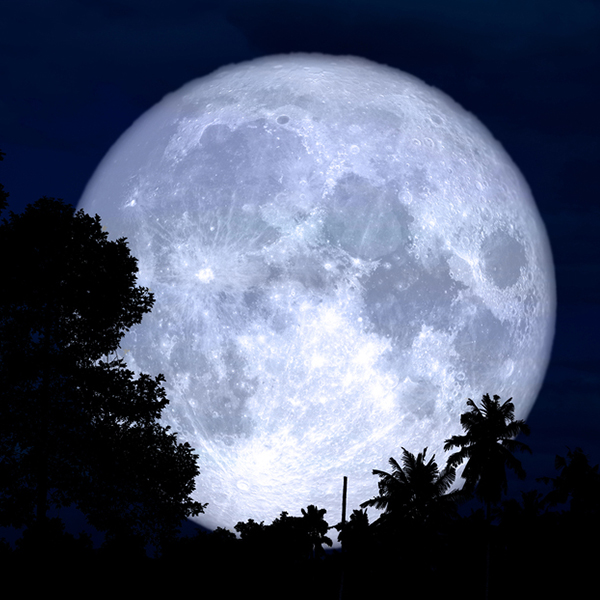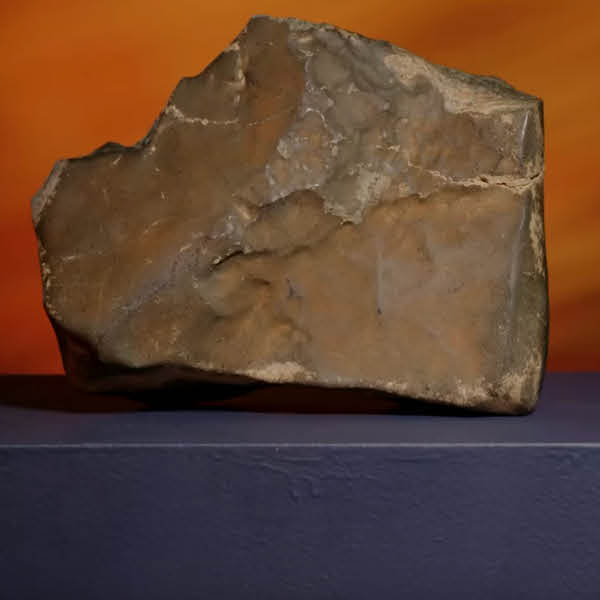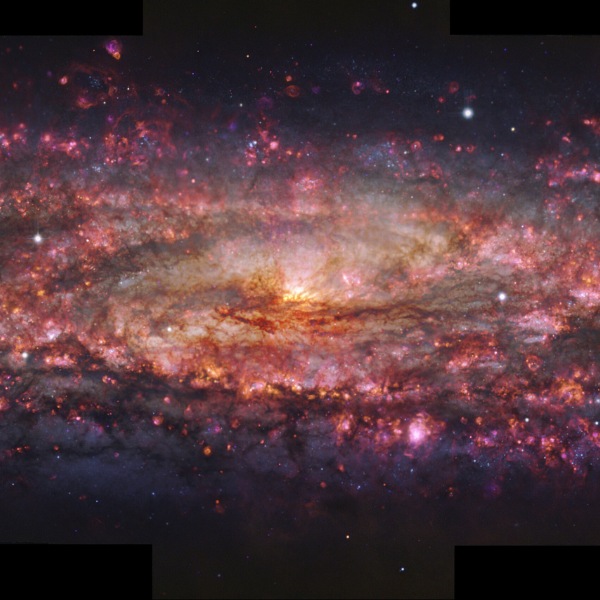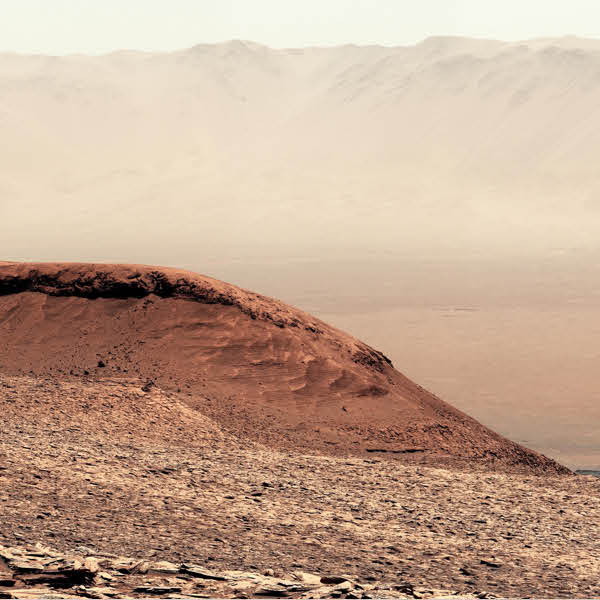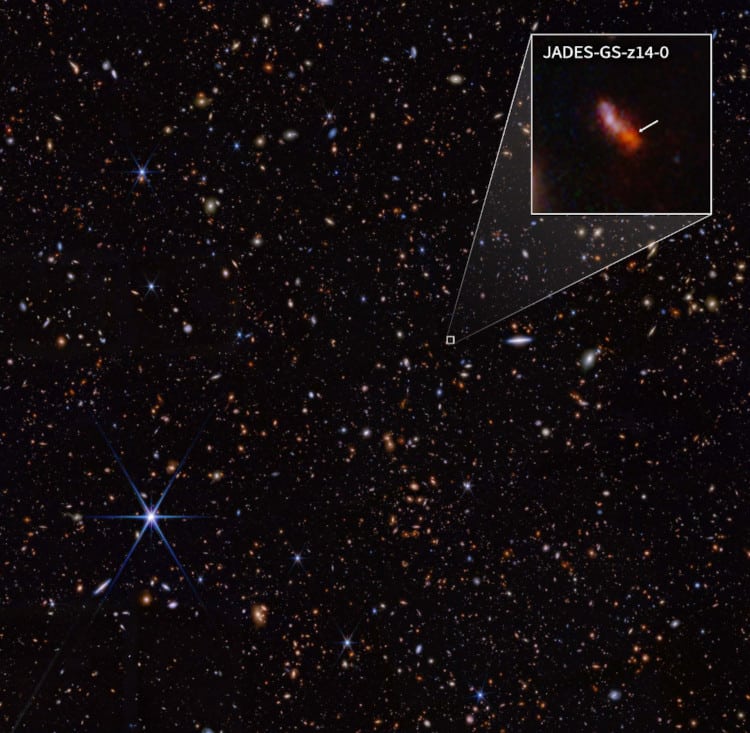
Photo: NASA, ESA, CSA, STScI, Brant Robertson (UC Santa Cruz), Ben Johnson (CfA), Sandro Tacchella (Cambridge), Marcia Rieke (University of Arizona), Daniel Eisenstein (CfA), Phill Cargile (CfA)
The celestial bodies spotted by the James Webb Space Telescope (JWST) continue to marvel the astronomy community. This time, it captured two of the earliest and most distant galaxies ever seen, breaking the records it previously set.
The galaxies, known as JADES-GS-z14-0 and JADES-GS-z14-1, were seen as they were around 300 million years after the Big Bang, existing at least 100 million years earlier than the previous record holder. This means that the light the JWST saw from this galaxy has been traveling for 13.5 billion years on its way to us.
“These galaxies join a small but growing population of galaxies from the first half billion years of cosmic history where we can really probe the stellar populations and the distinctive patterns of chemical elements within them,” team member and Kavli Institute for Cosmology scientist Francesco D’Eugenio said in a statement. The results are part of the JWST Advanced Deep Extragalactic Survey (JADES) program, which aims to provide answers into the ways in which the stars, gas, and black holes evolved primordial galaxies when our universe formed 13.8 billion years ago.
While JADES-GS-z14-0 is small compared to the Milky Way, it still boasts an impressive size. At 1,600 light-years across, it is forming stars at a rate 20 times faster than our own galaxy. It is also remarkably bright, and the fact that its luminosity is greatly powered by young stars serves as evidence for the quick formation of large, massive galaxies in the early universe not found until now.
“The size of the galaxy clearly proves that most of the light is being produced by large numbers of young stars, rather than material falling onto a supermassive black hole in the galaxy's center, which would [make it] appear much smaller,” says JADES team leader Daniel Eisenstein from the Harvard & Smithsonian's Center for Astrophysics (CfA).
Ultimately, this discovery is also a testament to the striking capabilities of the JWST. “The JWST will allow us to find more of these galaxies, perhaps when the universe was even younger,” shares JADES team member and University of California-Santa Cruz researcher Ben Johnson. “It is a marvelous opportunity to study how galaxies get started.”
h/t: [IFL Science]
Related Articles:
JWST Releases Photo of a Bright Ringed Uranus in Time for the Holidays
JWST Captures Image of “Baby Star” Similar to What Our Sun Looked Like Billions of Years Ago
JWST Captures Square-Shaped Ripple Rings Around a Star, Perplexing Astronomers
JWST Captures Possibly the Most Perfect Einstein Ring Galaxy Ever Seen











































































